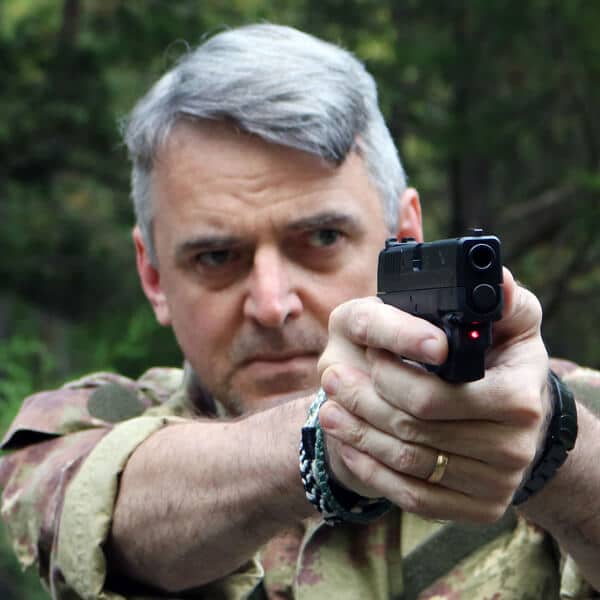USS Alabama: Fearsome Battleship to Historical Monument
August 2nd, 2025
7 minute read
Back in 1977, the world was introduced to the Death Star, an armored spacefaring battle station with the capacity to destroy entire planets with a single blast. It was the embodiment of overwhelming power projection in the Star Wars universe. The Death Star simply had a presence.
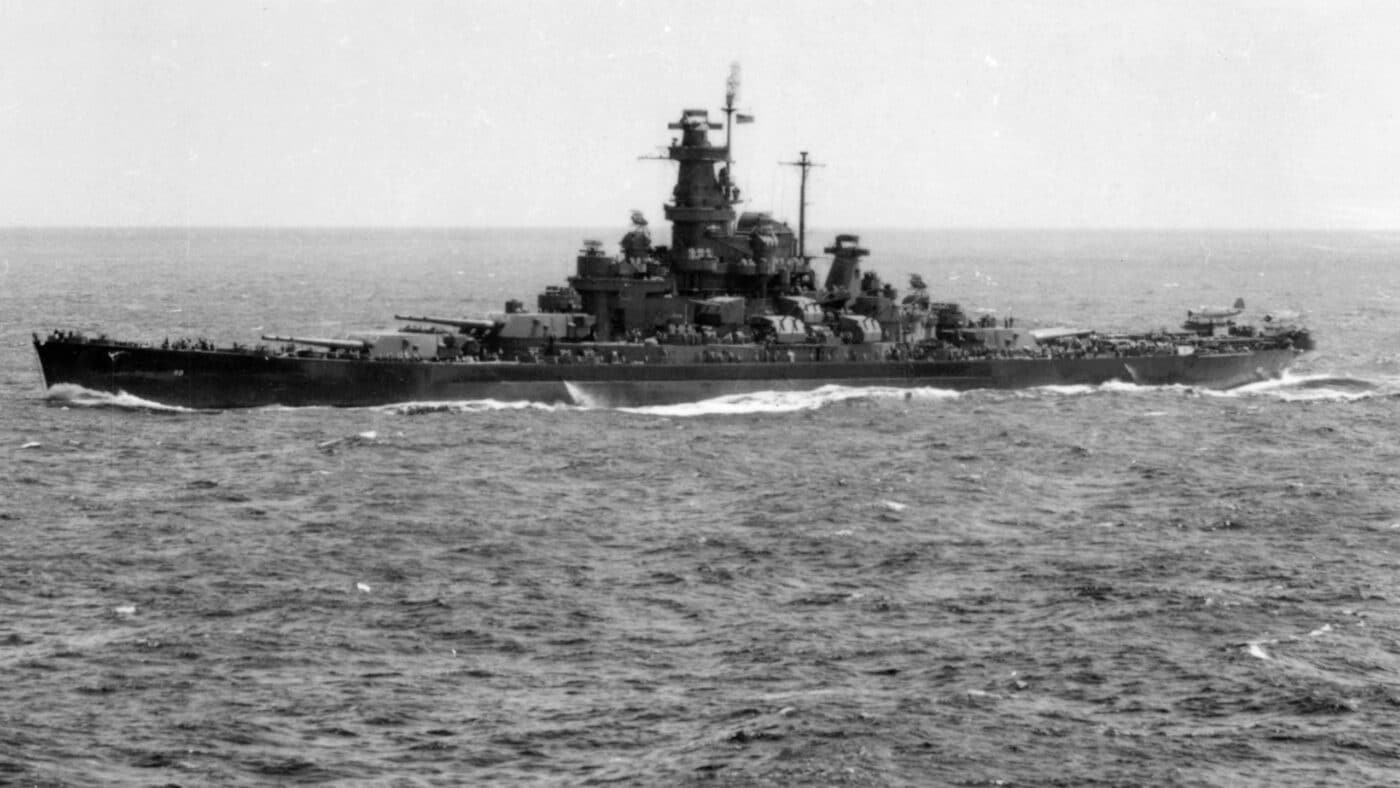
And so it is as you approach Mobile, Alabama, via Interstate 10 along the coast of the newly christened Gulf of America. You see this thing from miles away, moored majestically within Mobile Bay. That thing is the battleship USS Alabama, and it just dominates the landscape. It’s a manmade edifice that seems too large and too imposing to have been an actual human contrivance. The Alabama seems viscerally more akin to some kind of enormous floating steel mountain. This thing is just huge.
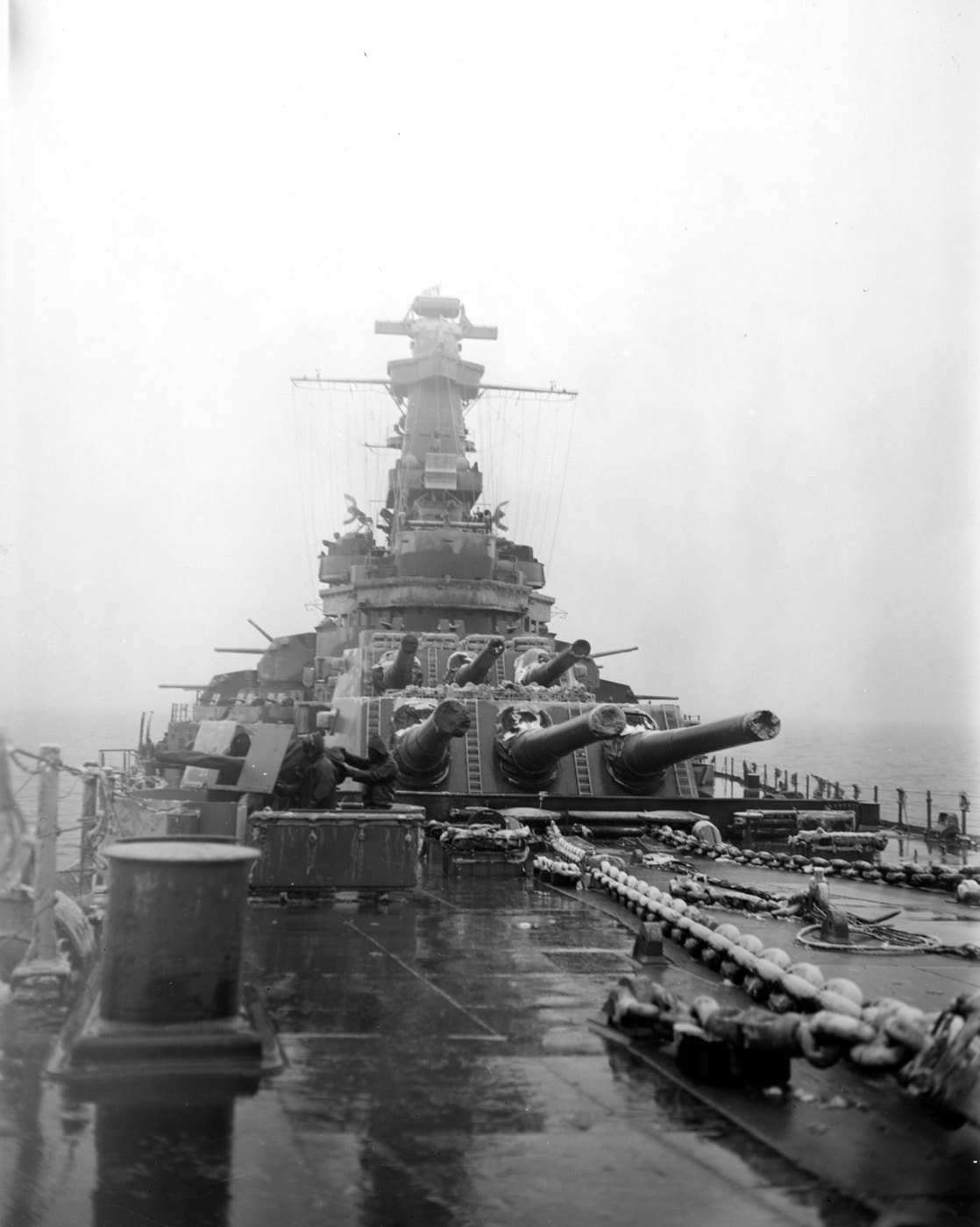
The Alabama also absolutely bristles with guns. Nine 16-inch guns arranged in three heavily-armored turrets dominate the deck space. Twenty 5-inch guns mounted in ten twin turrets along with half a dozen quad 40mm Bofors cannon and thirty-five free-standing 20mm Oerlikons adorned the superstructure when first she went to war. These were increased to twelve quad 40mm mounts and thirty-five 20mm weapons by war’s end. The 20mm and 40mm weapons were used primarily for antiaircraft defense. The five-inch guns could be directed toward either ground or air targets.
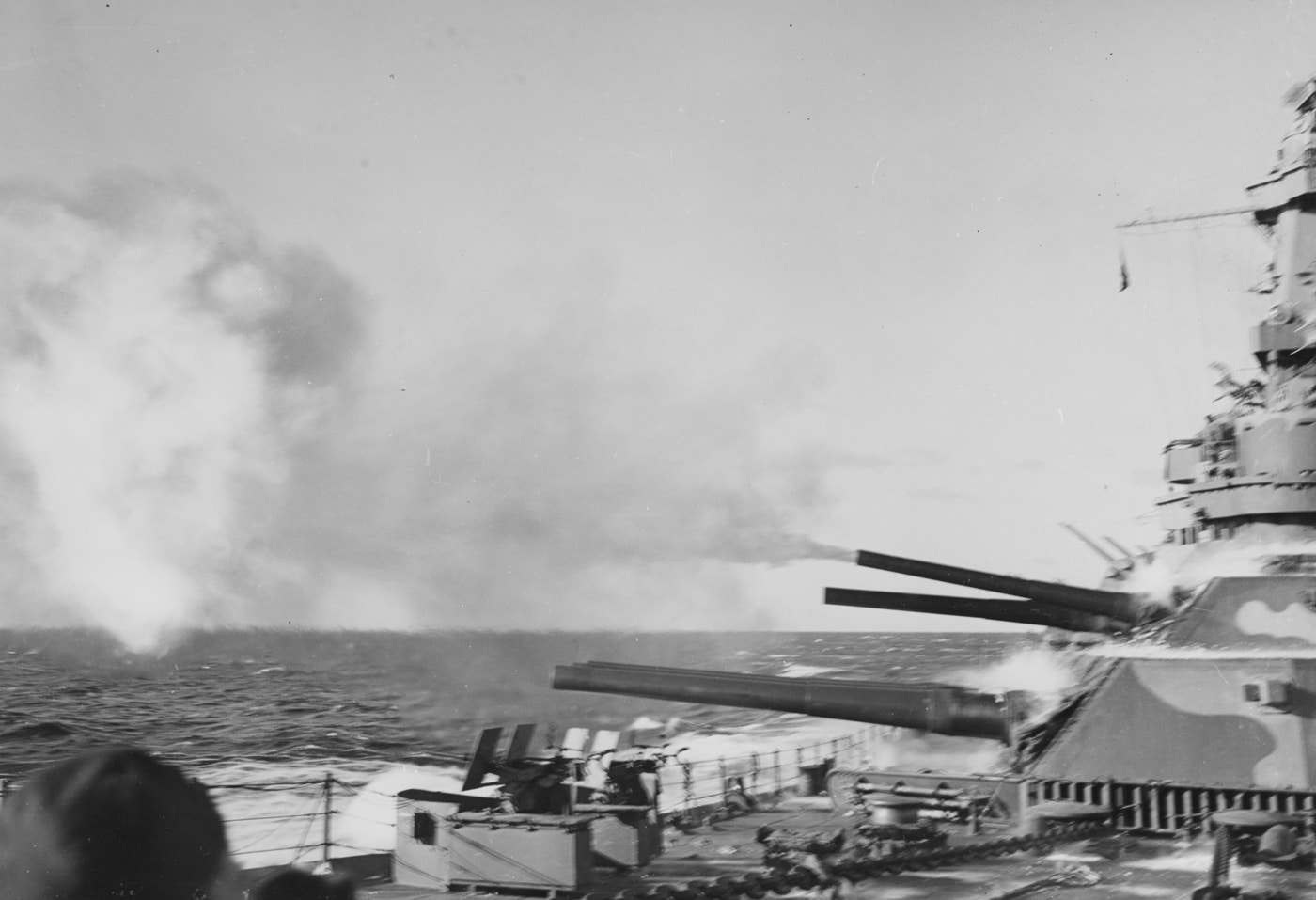
Those 16-inch guns would throw a high explosive shell that weighs as much as a Ford Fiesta twenty-three miles and drop it within a 150-yard circle. A single round would produce a crater 50 feet wide and 20 feet deep. In Vietnam, one round was adequate to create a helicopter landing zone in thick jungle. If this beast steamed up to your shoreline, you were just freaking doomed.
Details
The Alabama is 680 feet long — more than two football fields’ worth of armored American butt-whooping. She is 108 feet wide at her broadest point and sports a 35-foot draft when fully loaded. When outfitted for war, the Alabama weighed 44,519 tons. Despite such a breathtaking displacement, however, the big ship was a veritable track star in her prime.
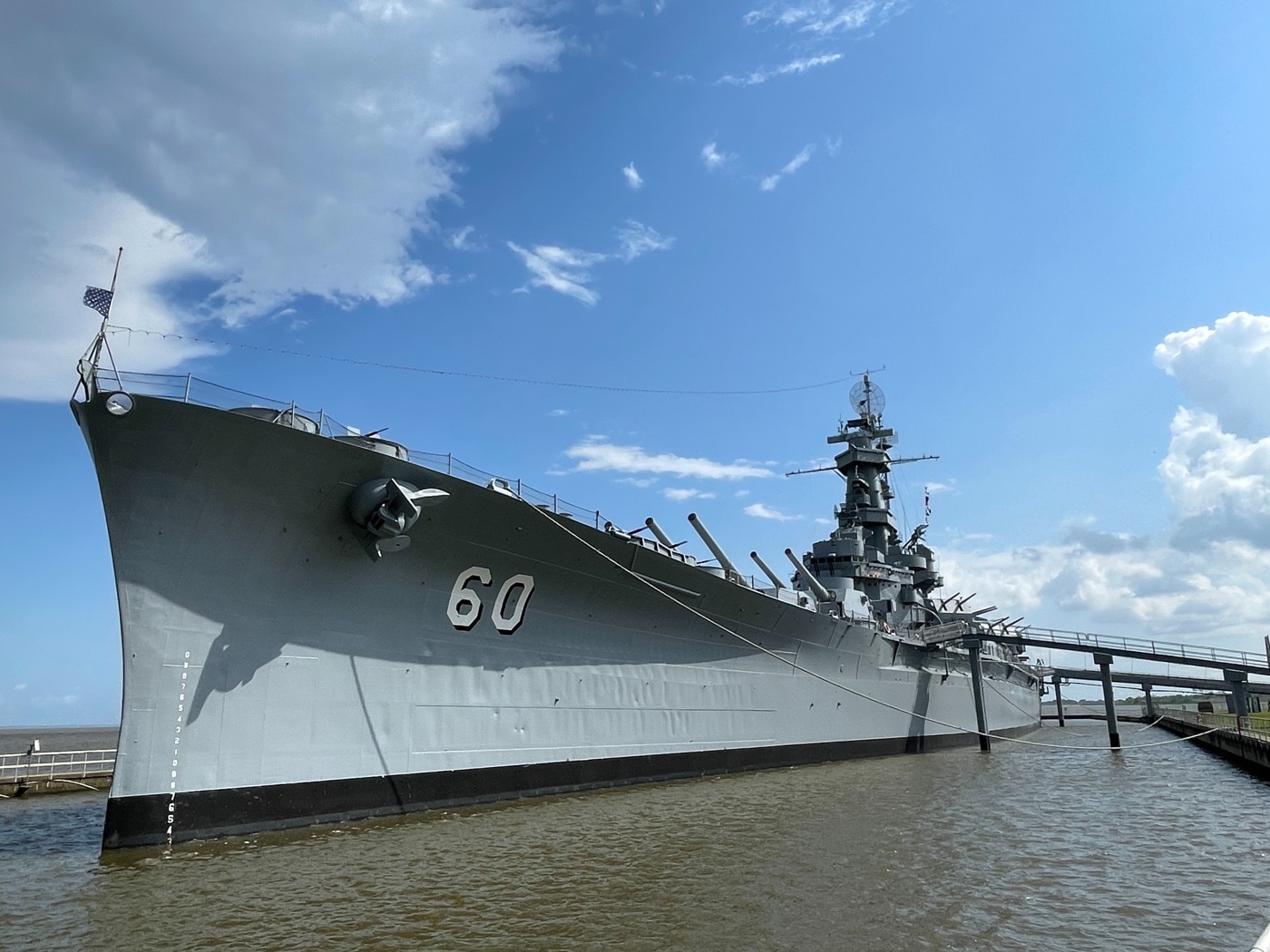
Powered by four massive 130,000-hp General Electric steam turbines, the Alabama could sprint at 27.5 knots. That’s about 32 miles per hour. This massive armored monster that weighs more than your entire neighborhood could actually exceed the speed limit for most suburban streets. Cruising at fifteen knots or 17 mph, the Alabama could travel 15,000 miles on a single tank of gas. Like the Death Star, the Alabama was purpose-designed to project irresistible, relentless power.
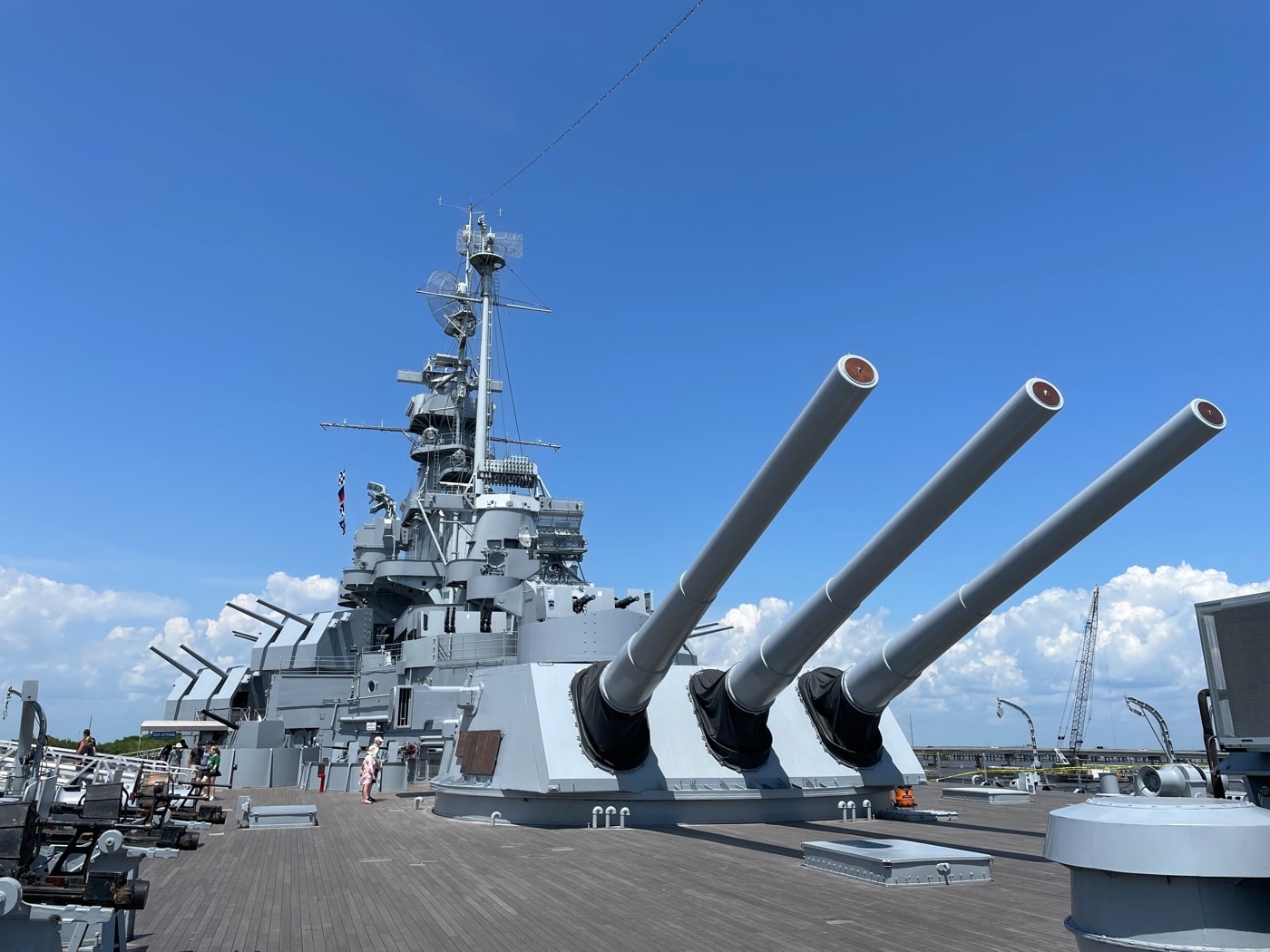
While all those guns were admittedly impressive, the Alabama was designed to take as well as she gave. The ship’s primary armored belt was comprised of more than a foot of hardened steel. The deck featured six inches of steel plating. The main turret faces were 18 inches thick, while the conning tower sported 16-inch armored casemates.
Origin Story and Operational History
There has never been a manufacturing powerhouse to compare to the United States during World War II. We really got tooled up building capital ships in 1940. We ceased production of these hulking behemoths by D-Day in 1944, with the realization that the war was all but won. Overall, we fielded a breathtaking 105 aircraft carriers alongside a total of 25 battleships during that brief period.
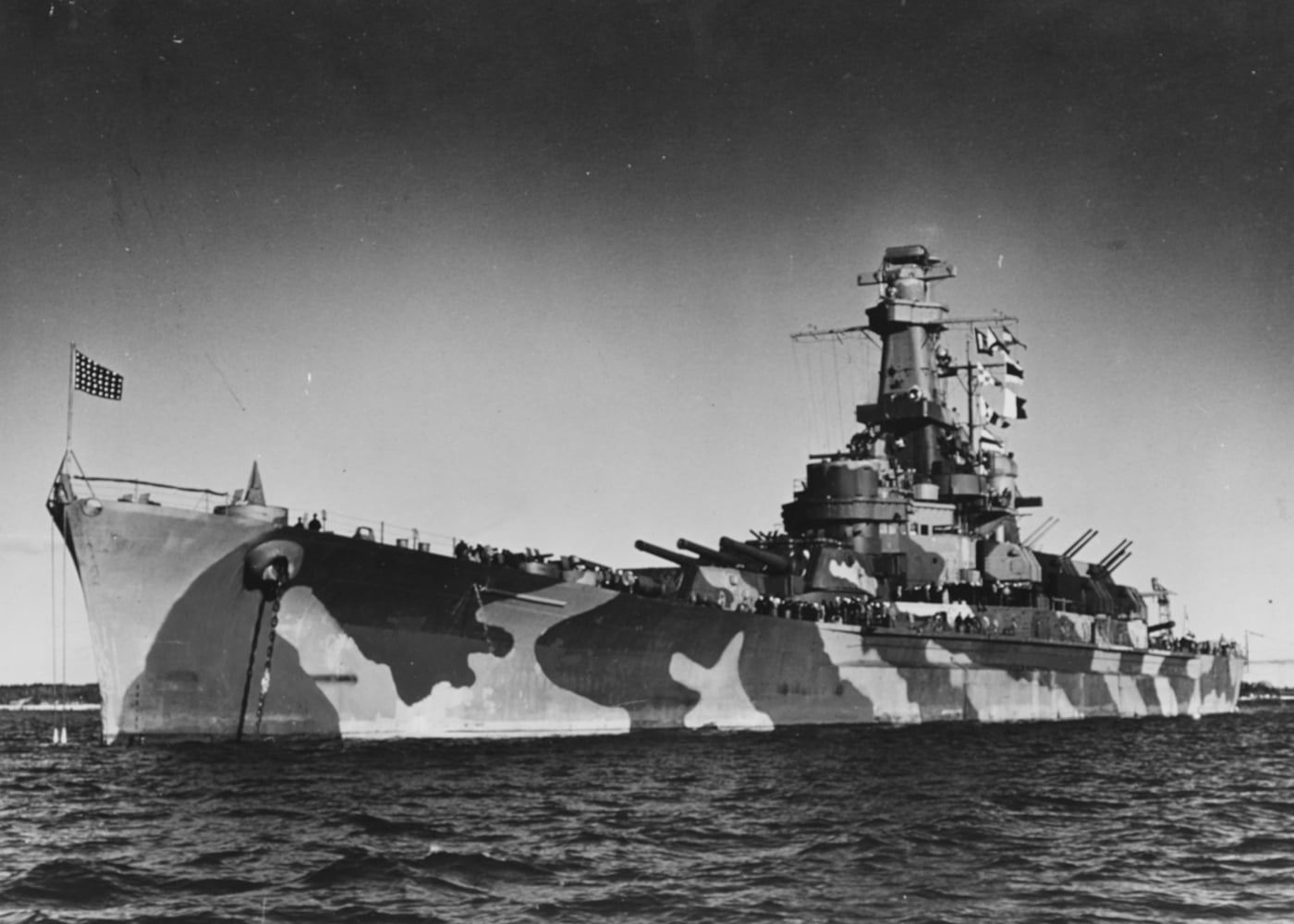
Norfolk shipbuilders first laid the keel for the Alabama on 1 February 1940. She earned her commission six months later and hit the seas for her shakedown cruise a short three months after that. Her first operational deployment was in defense of Atlantic convoys to the Soviet Union. On 25 August 1943, the Alabama transited the Panama Canal, intending to take the fight to the Japanese. This massive battlewagon spent the rest of the war pounding Axis targets as part of MacArthur’s island-hopping campaign.
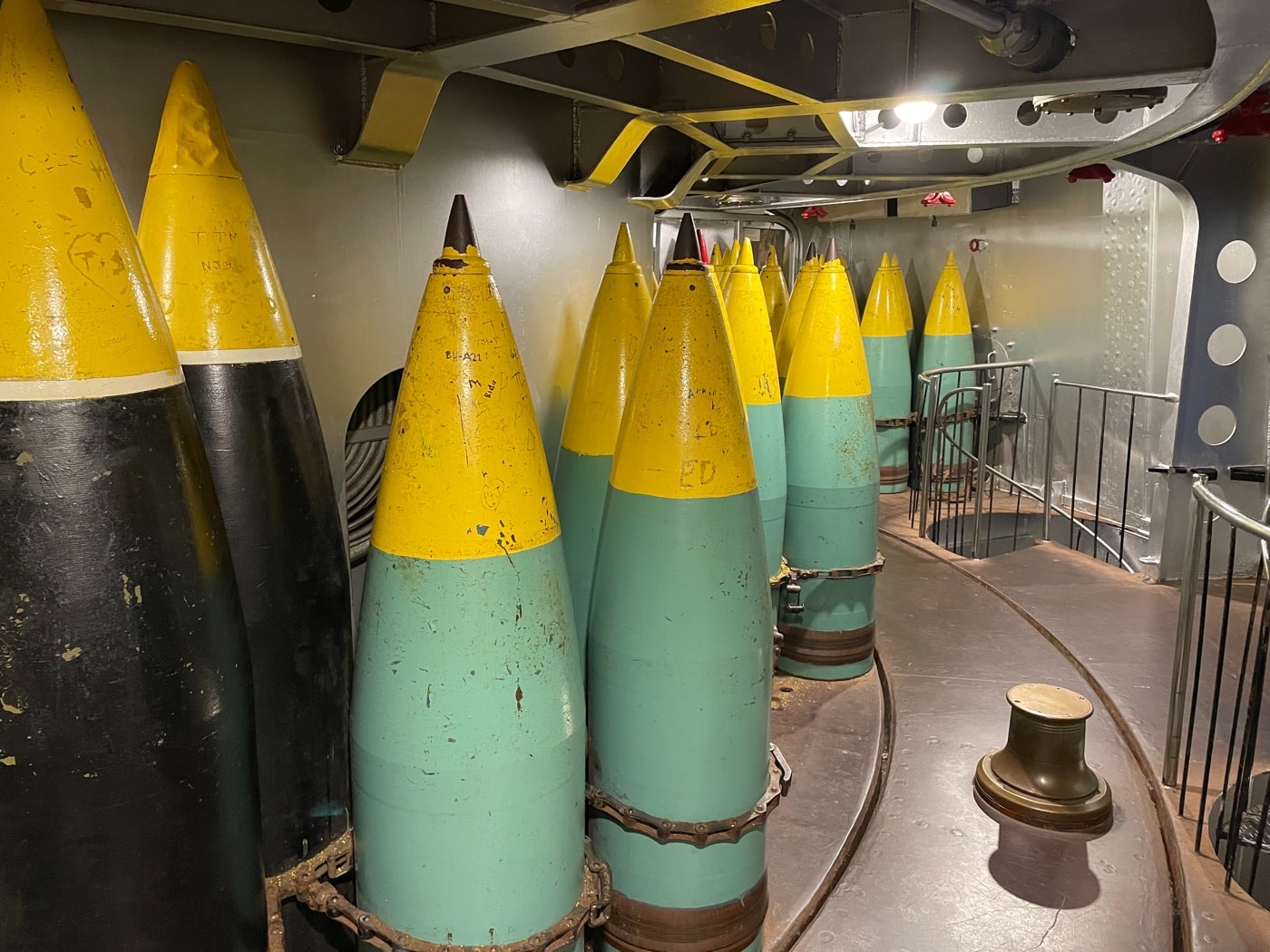
The Alabama fought through all of the major campaigns of the Pacific War, ending the conflict in Tokyo Bay. Along the way, she shot down 22 enemy aircraft and fired 1,252 massive 16-inch rounds at Japanese shore targets. Throughout the war, the Alabama did not suffer any significant damage due to enemy action. However, there was one unfortunate accident wherein a 5-inch gun discharged and struck another 5-inch gun fitting during an enemy attack.
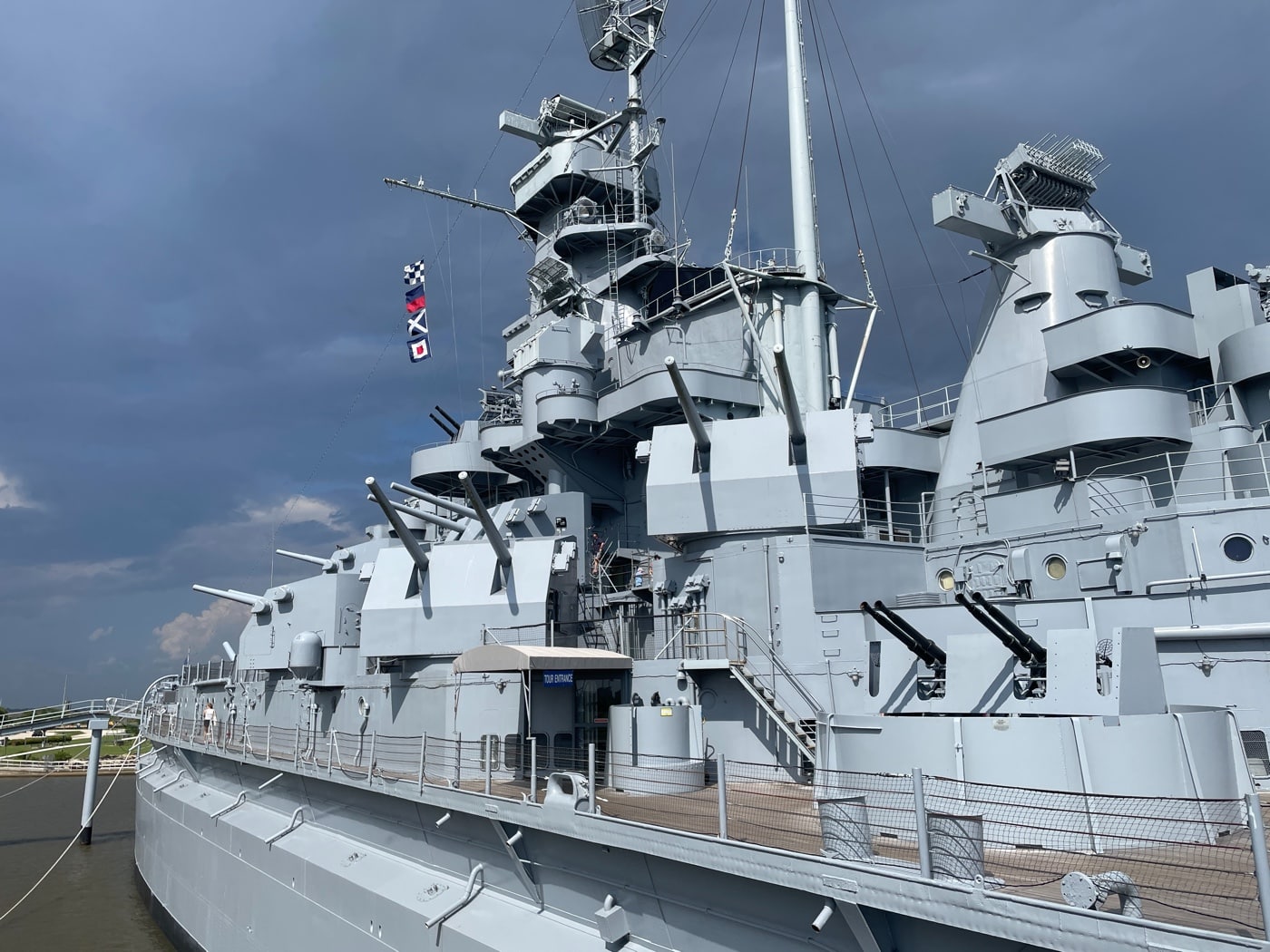
The one thing that came closest to doing this massive battlewagon in was Typhoon Cobra on 17 December 1944. This violent tropical cyclone smashed into the battle group to which the Alabama was assigned with fury unimaginable, sinking three destroyers and causing the big ship to roll as much as thirty degrees. I can only imagine how much fun that was. Despite wrecking the battleship’s two Kingfisher patrol planes, there was no other lasting damage.
The Alabama Experience
Today, the USS Alabama is on display alongside the WWII-vintage submarine USS Drum as well as dozens of armored vehicles and vintage combat aircraft. The collection includes a B-52 Stratofortress as well as the CIA’s A12 version of the SR-71 Blackbird. Tragically, I have actually flown three of the aircraft in the museum. Yeah, that makes me feel pretty darn old.
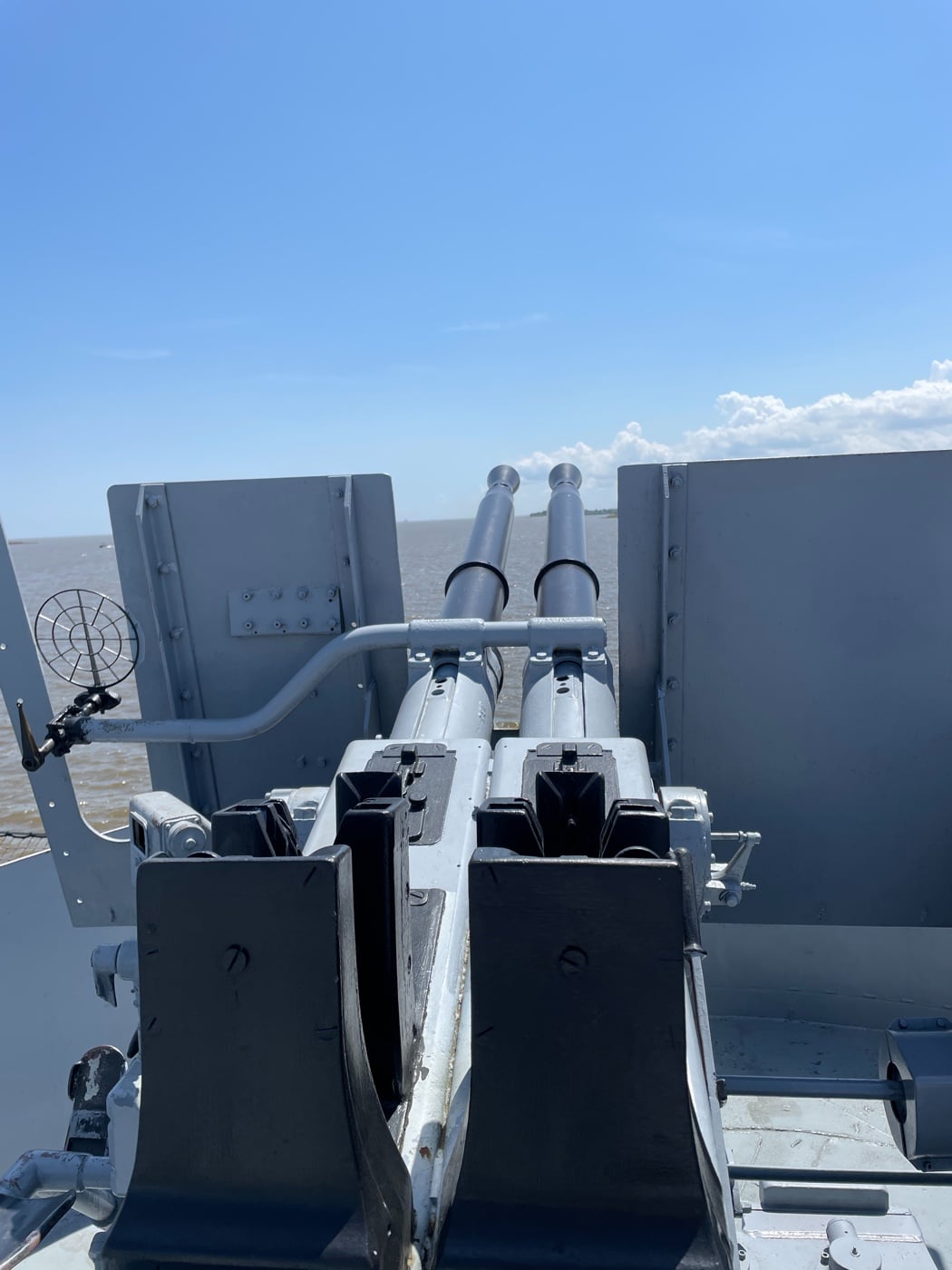
The battleship is unimaginably huge. There are three self-guided tours that take you everywhere within the enormous vessel. You have to be a bit of a contortionist to get into the main gun turrets, but the scale of the thing makes it all worthwhile.
The Alabama had a surgical suite, berthing space for 2,500 sailors and Marines, a post office, a cobbler shop, a ship’s store, a massive machine shop, extensive mess and laundry facilities, and everything else you might need to support a small floating city. You get to see the Combat Information Center, the armored bridge, the weapons maintenance facilities, and the main gun ammunition magazines. Everything is pretty user-friendly so long as you are fit and mobile.
Ruminations
I came away from this experience in awe. Like supercarriers in the Information Age, battleships like the Alabama were prestige weapons. Very few countries could afford to build and support them. Of those that could, not all of them possessed the technical capability to do so. That we fielded twenty-five of these armored monsters just boggles the mind.
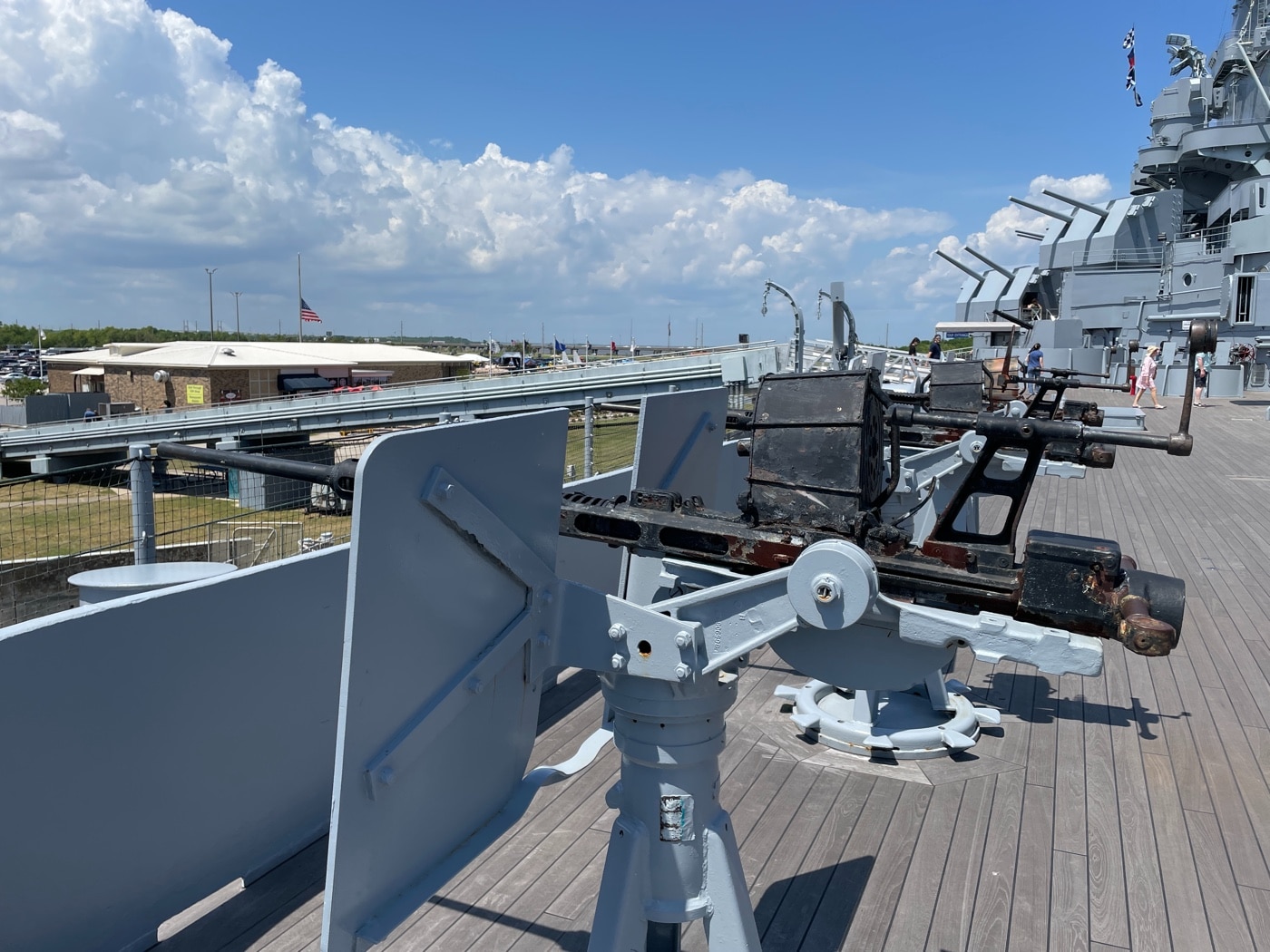
The ship’s interior would have been unimaginably hot while underway, particularly in the tropics. Every sailor would have had a small part to play in the effective operation of this leviathan war machine. However, like tanks, it would have been a truly horrible place to die. Despite its size, the inside of the ship leaves one feeling undeniably claustrophobic. Though battleship-versus-battleship combat was vanishingly rare during WWII, when it did happen, it was pretty awful.
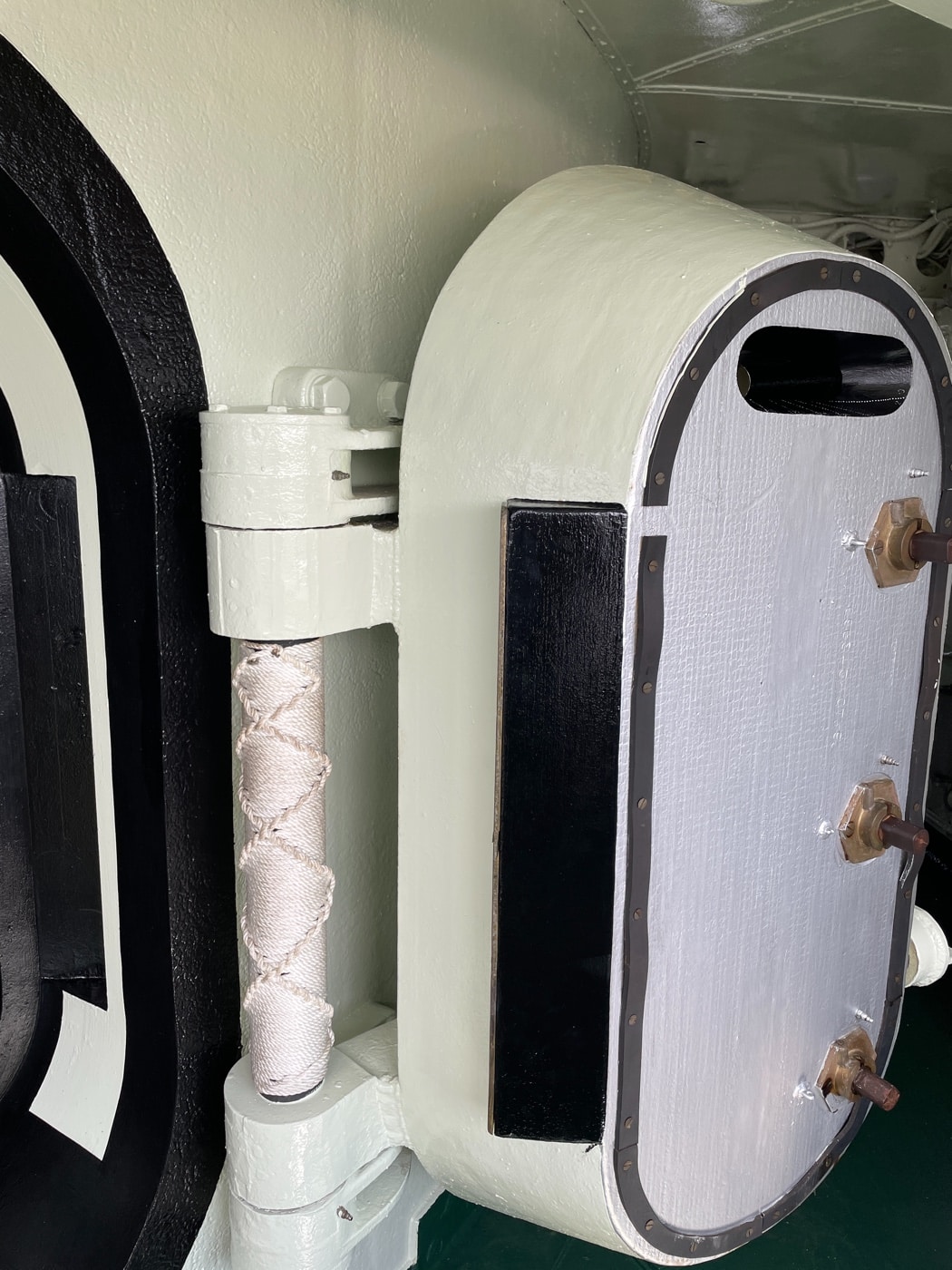
Curiously, the battleship is used for lots of stuff these days. When we were visiting recently, there was a sprawling vintage car show on the grounds. Additionally, the Alabama regularly plays host to Boy Scout sleepovers. I have some friends who have done this. After hours, the scouts are free to roam the bowels of the ship and explore. I cannot imagine how cool that would be for a teenage boy. It’s a freaking battleship. It’s not like they could really tear it up.
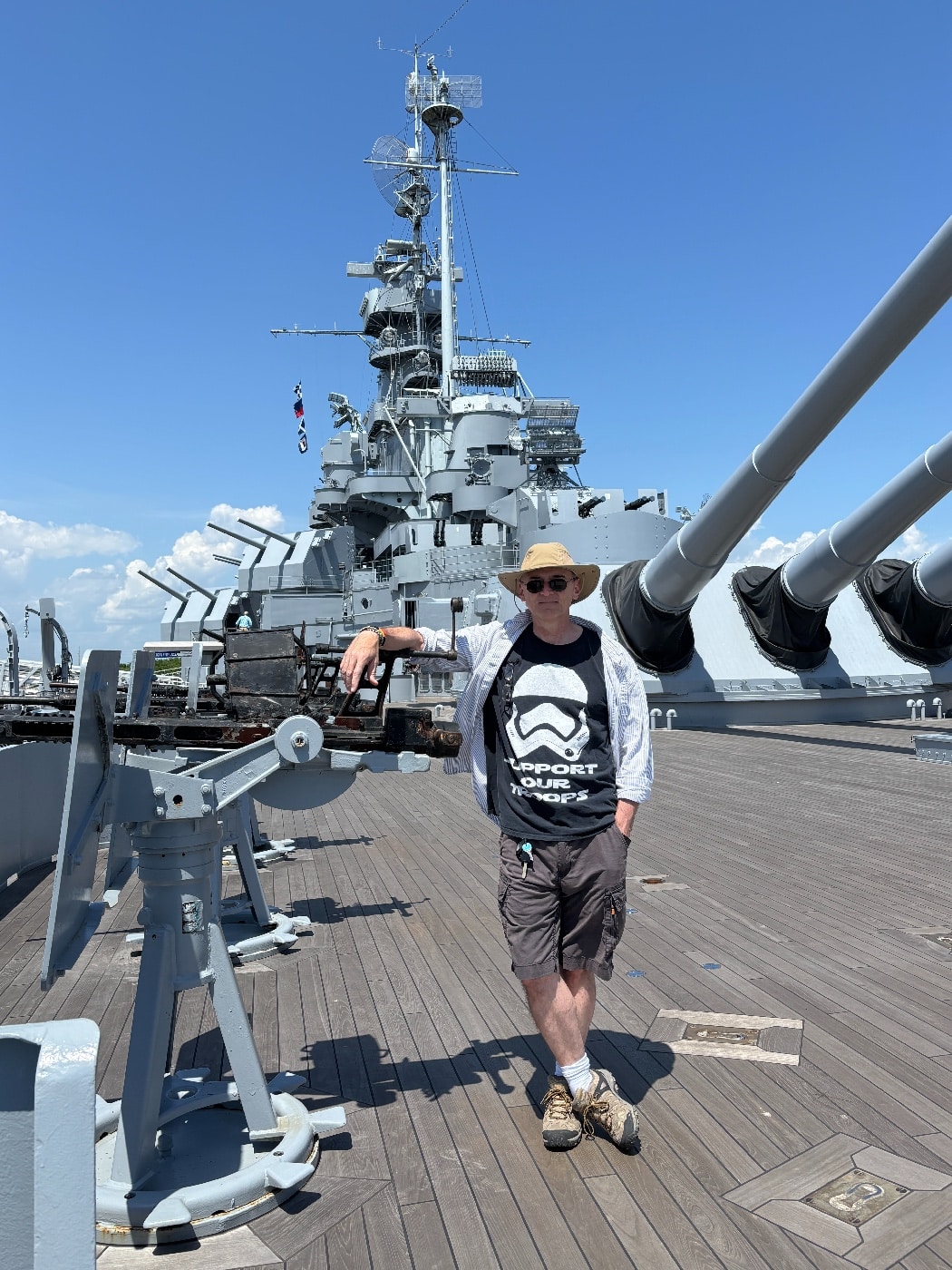
It takes about half a day to do the battleship park. Double that if you really want to linger over the details. However, Mobile, Alabama, is on the way to a lot of places. It’s a great place to stop and stretch your legs. Exploring the USS Alabama will remind you of exactly what made America the master of the seas.
Editor’s Note: Please be sure to check out The Armory Life Forum, where you can comment about our daily articles, as well as just talk guns and gear. Click the “Go To Forum Thread” link below to jump in and discuss this article and much more!
Join the Discussion
Continue Reading
Did you enjoy this article?

 557
557





